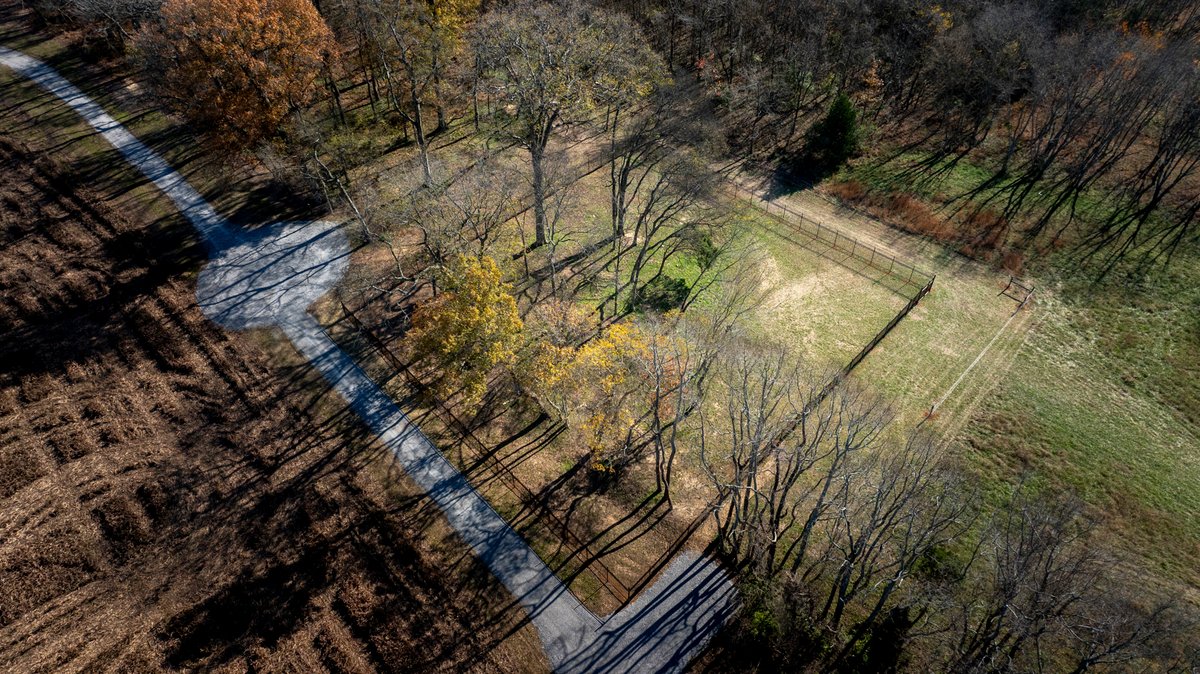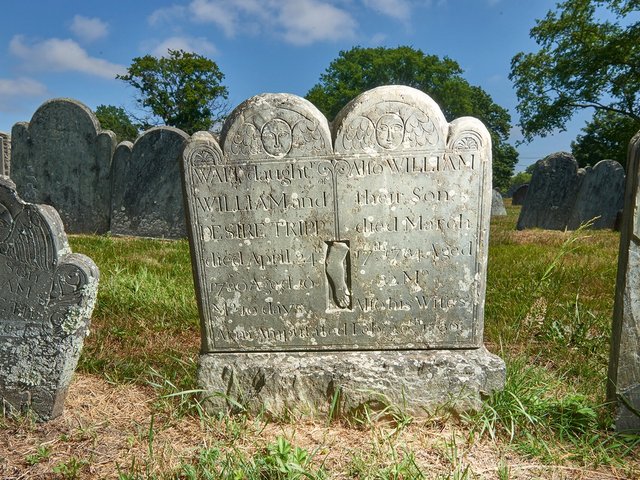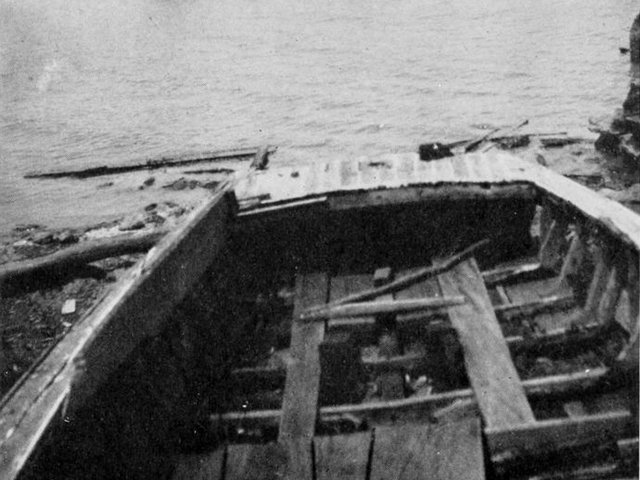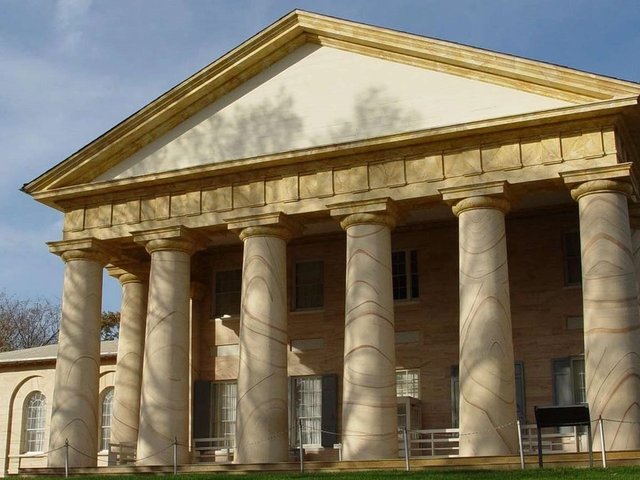The legacy of slavery has always been entwined with the Hermitage, Andrew Jackson’s 1,000-acre Tennessee plantation. There, about ten miles north-east of downtown Nashville, remnants of the quarters formerly inhabited by people enslaved by the seventh US president have been excavated, and artefacts of their daily lives have been unearthed—from sewing thimbles to toy marbles. Until last year, however, where exactly this community had cared for and interred their dead was unknown.
“It felt to me that the story of the Hermitage was not complete,” says Jason R. Zajac, the president and chief executive of the Andrew Jackson Foundation,
which runs the Hermitage. “The Hermitage has been doing archaeology and genealogy research into the lives of the people who were enslaved going back to the late 1970s, and it’s always been a question of where people would have been laid to rest.”
The cemetery was finally located in a year-long project that culminated in late 2024. The investigation of the site with non-invasive ground-penetrating
radar (GPR), aerial imaging and historical research has involved the State of Tennessee Division of Archaeology, the Vanderbilt Institute for Spatial Research and the cultural resources management company TRC. The work was supported by an anonymous donor and concentrated on five acres of undesirable agricultural land near a creek bottom. Like many cemeteries for enslaved people, it was barely recorded in historical documents, with a main resource being a 1935 agricultural report that briefly referred to “graves and large trees” in the area. The cemetery itself spans slightly less than an acre, comprising 28 possible graves.
Revealing a hidden site
“The part of the Hermitage where the site is, and where we had suspicions that it was, was grown over for decades,” says Tony Guzzi, the chief of preservation and site operations at the Hermitage. “I’ve tried to walk through it every year but could only really get through it in the wintertime, and even that was difficult. The funding allowed us to take that five-acre area and clear it of all of that underbrush. Most of it was invasive honeysuckle and privet and a lot of second-growth trees.”
The clearance work revealed rows of depressions that are oriented east to west, suggesting European-style burials likely conducted with shrouds instead of coffins, as well as fieldstones, some positioned vertically—probably as markers. The cemetery is located 1,000 feet north-west of the plantation’s mansion, and while nothing was ever built on its land, it was alongside active parts of daily life and labour.
“It’s right in the centre of the historic core of everything,” Guzzi says. “It’s there along the creek where [the enslaved people] would have gathered water. It’s something that people could have visited on a regular basis, because it was not far away at all.”
The cemetery was recently added to the Hermitage’s In Their Footsteps tour, which focuses on the lives of the enslaved people, with a new walking path and accessible gravel path now connecting it to the rest of the site. A fence has been erected to protect it, and signage further contextualises its history, including information on the identities of 26 enslaved people who died on the plantation and may be buried at the site. The Jackson family owned more than 300 men, women and children between 1788 and 1865, and these 26 individuals likely do not represent the entire number of the interred.
“We think [there are] more, especially children,” Guzzi says. “One of the primary ways that we’re doing a lot of this work is through tax and census records, and if somebody is born and dies between [census years], or they’re young, they may not necessarily show up on those lists. What the archaeologists have told us is that they found 28 probable adult burials at the site, but there are likely more, and those are probably children. What GPR can’t always discern is that the pattern for children’s graves is more irregular and not always at the same depth, whereas adult graves are fairly regular and at a consistent depth.”
Ongoing interpretation
Part of the historical research for the Hermitage site compared it to burial grounds at other plantations owned by US presidents, such as George
Washington’s Mount Vernon, James Madison’s Montpelier and Thomas Jefferson’s Monticello—all in Virginia. Their cemeteries for enslaved people similarly had few, if any, permanent markers and were marginalised and segregated from the well-marked white cemeteries. They have also been known for longer—Mount Vernon’s received one of the oldest commemorations in 1929 (although, even with a marker, the site was subsequently allowed to be neglected and overgrown)—yet their interpretation and recognition continue to evolve. Monticello, for instance, rededicated its burial ground for enslaved people in 2022, with improved signage, plantings and details like dedicated parking for descendants.
Every plantation has a slave burial ground—every single oneKami Fetcher, historian
“Every plantation has a slave burial ground—every single one,” says Kami Fletcher, the associate professor of African diasporic histories and coordinator of Africana studies at Goucher College in Baltimore, who has served as a consultant to historical plantations. “And if there isn’t one, you need to be asking, ‘Why don’t we know where it is?’ We have to ask these questions instead of assuming that the only burial ground at these plantations is the marble headstones of the enslavers.”
The long-term plans for how to honour the cemetery at the Hermitage are currently being explored, and all decisions will centre on the involvement of an advisory committee that includes descendant family members, historians and community stakeholders. A final report on the cemetery, which will situate it further within the history of the Hermitage and the experiences of the enslaved people who lived there, is planned to be released later this year.
There is already a memorial at the Hermitage for some burials of enslaved people, although it is for individuals who were rediscovered at a different nearby plantation and reinterred at the site. It was designed by the artist and academic Aaron Lee Benson and includes seven oaks planted in the shape of the Little Dipper constellation, the trees intersecting with a circle of stones.
Any memorialisation of the newly identified cemetery is still being considered. “We feel it has to be a very inclusive and transparent process,” Zajac says. “This will probably be some of the most important work we do, not just in the months but even in the years that are coming.”






